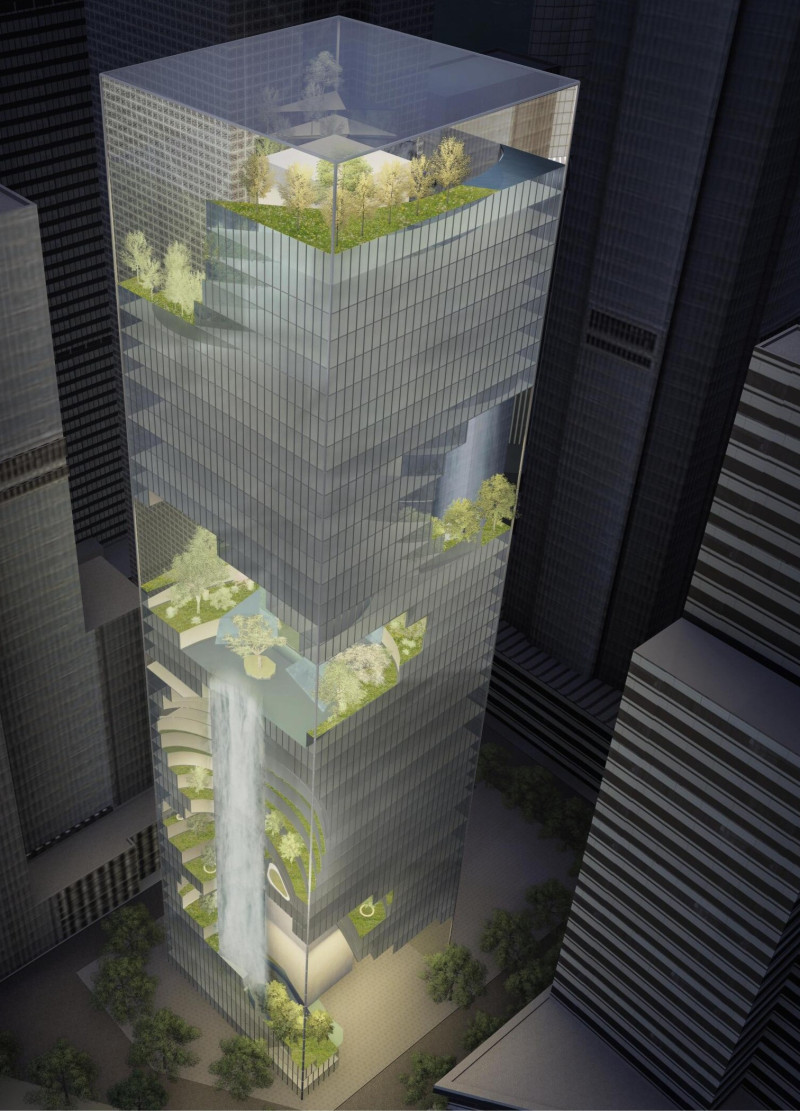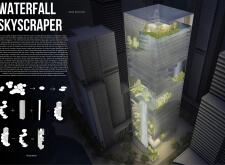5 key facts about this project
The Waterfall Skyscraper is an innovative architectural project situated in downtown Singapore. It exemplifies a modern approach to urban design by integrating nature into high-rise living. The structure is characterized by cascading terraces filled with greenery and water features, creating a vertical landscape that enhances both environmental sustainability and aesthetic quality. The design emphasizes energy efficiency and user well-being, functioning as a residential and commercial space that aims to improve the urban environment's social and ecological health.
Unique Design Features
One of the primary distinguishing aspects of the Waterfall Skyscraper is its biophilic design, which fosters a connection between occupants and the natural environment. This is achieved through the incorporation of terraces at various levels, designed to support vegetation and facilitate the flow of water. These terraces serve multiple purposes: they provide outdoor space for residents, help regulate building temperature, and enhance biodiversity within an urban setting. The use of materials, such as glass facades that allow natural light to penetrate deeper into the interior and reinforced concrete for structural integrity, reflects a careful consideration of both form and function.
The integration of sustainable design principles is another significant feature. The use of energy-efficient systems, including rainwater harvesting and passive cooling methods, reduces the building's overall environmental impact. This is complemented by a well-thought-out landscape design, where native plant species are planted to promote local biodiversity and resilience.
Sustainability and User Engagement
The Waterfall Skyscraper is designed to serve its community effectively, blurring the boundaries between private and public spaces. The ground level includes accessible gardens and seating areas, fostering interaction among residents and visitors. This aspect is crucial in urban settings, as it facilitates social connections and encourages outdoor activities.
Moreover, the architecture incorporates the latest advancements in sustainable construction technologies. The selection of building materials such as green roof systems, sustainable timber for interior accents, and a robust steel framework illustrates a commitment to durability and environmental mindfulness. Together, these elements create a cohesive design that prioritizes occupant comfort while aligning with sustainable architectural trends.
To delve deeper into the Waterfall Skyscraper and its architectural strategies, consider exploring the project's architectural plans, architectural sections, and architectural designs. This will provide further insights into the underlying architectural ideas and the innovative approaches that make this project a significant contribution to modern urban architecture.























